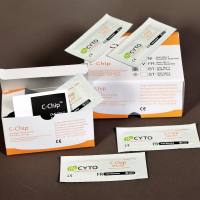Cell-Cell Adhesive Interactions in an In Vitro Flow Chamber
互联网
722
A critical step in the recruitment of leukocytes to a site of inflammation is leukocyte adhesion to the vascular endothelium in the fluid dynamic environment of the microcirculation. This process involves a cascade of adhesive events, including initial attachment, rolling, spreading, and ultimately transendothelial migration (reviewed in 1 ,2 ). To elucidate the biochemistry and biophysics that govern these processes, in vitro flow chamber assays have been developed. These assays allow the study of leukocyte adhesion under well-defined fluid flow conditions that mimic the in vivo fluid dynamic environment. The parallel plate flow chamber is the design most frequently used for this purpose. Such a device was used in the late 1980s to study human neutrophil adhesion to cultured human umbilical vein endothelial monolayers (3 ). This group (3 ,4 ) has recently published a report that details the chamber design and operation. In general, this method involves perfusing a suspension of purified leukocytes over a coverslip containing a monolayer of cells or a region of purified adhesion molecules. Adhesive events are monitored in live time and recorded by videomicroscopy for later analysis. We present here the methodology of using the flow chamber currently used by our group to study leukocyte and tumor cell adhesion to vascular endothelium or purified adhesion molecules under defined laminar flow conditions.









